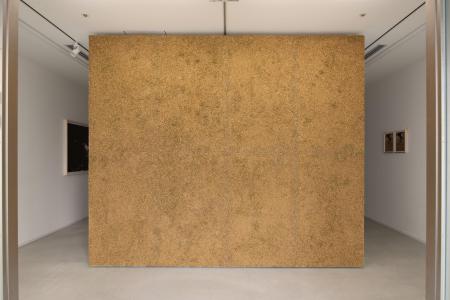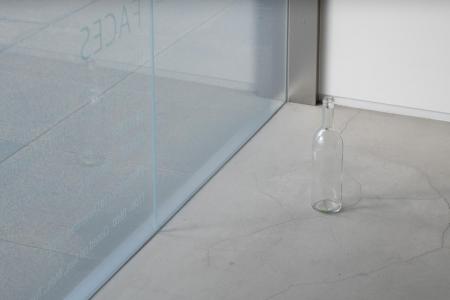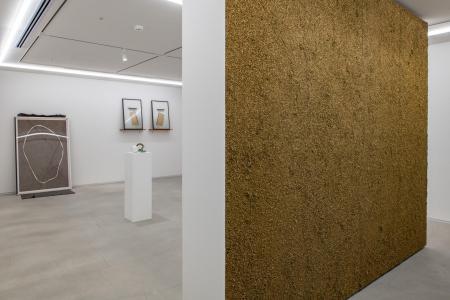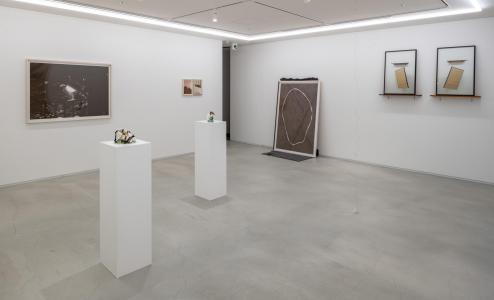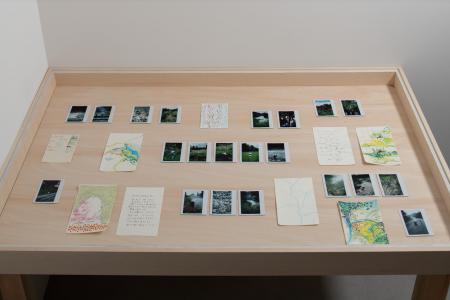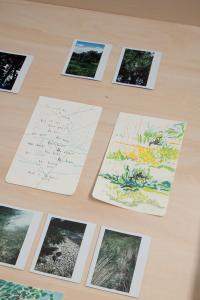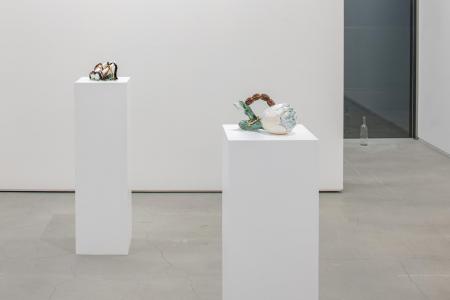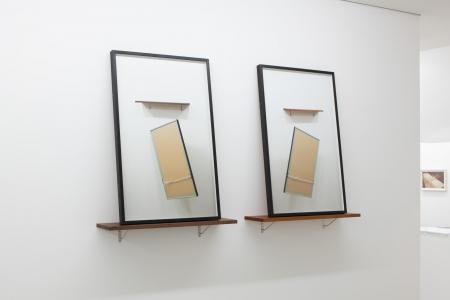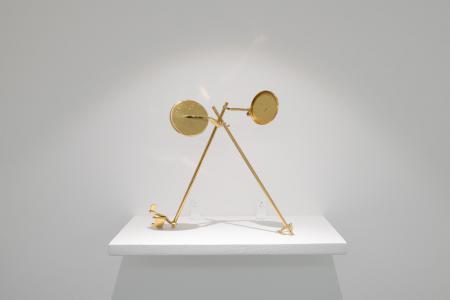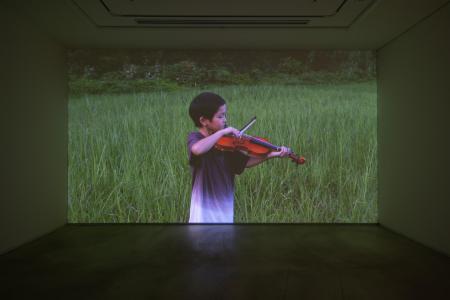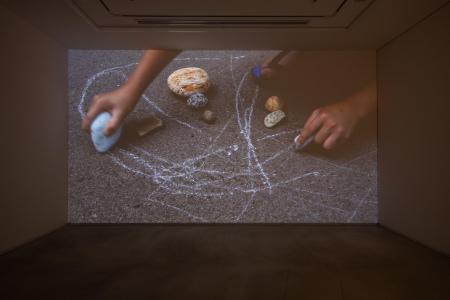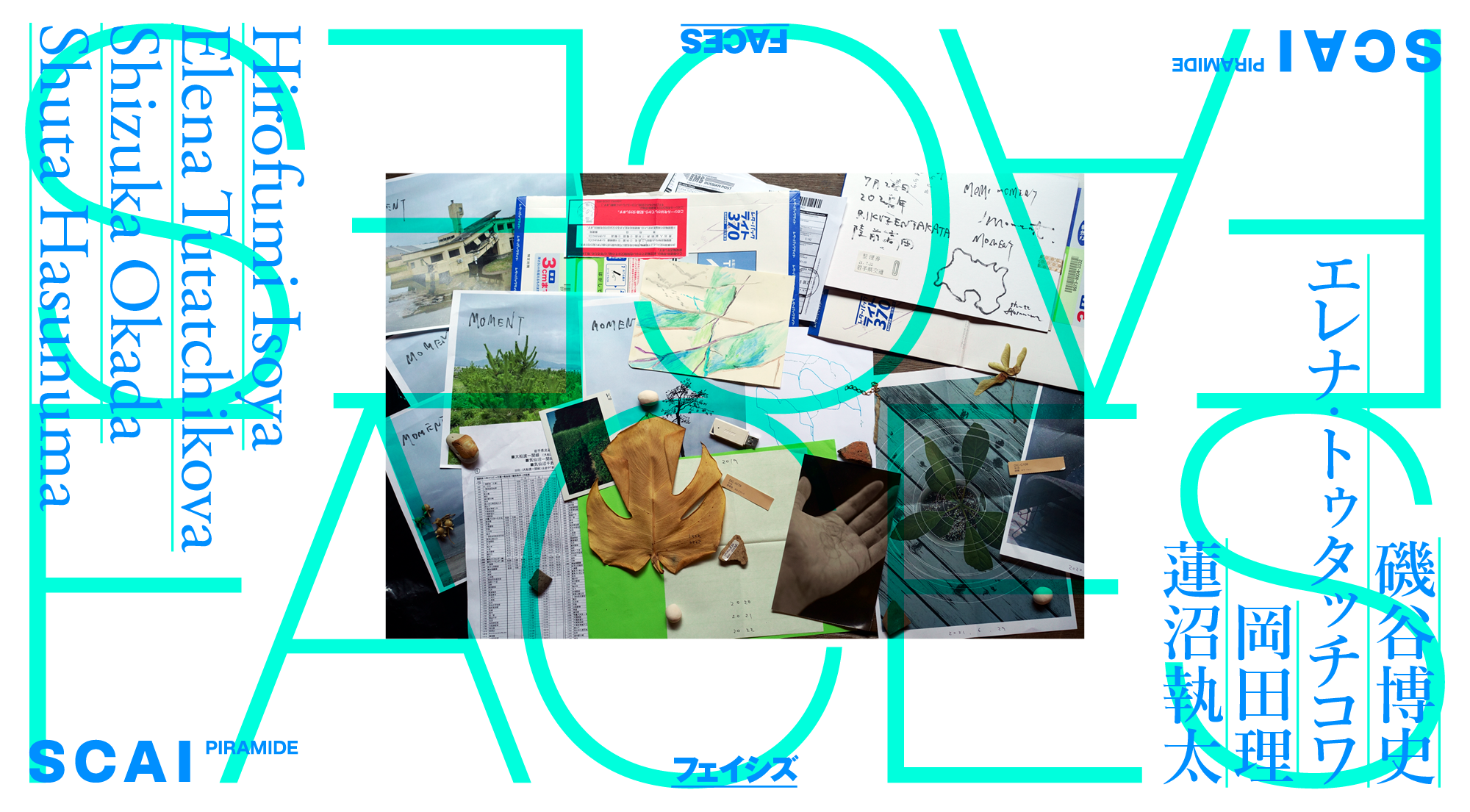
FACES
Hirofumi Isoya, Shizuka Okada, Elena Tutatchikova, Shuta Hasunuma
Opening Hours: 12:00 - 18:00
*Closed on Sun., Mon., Tues., Wed. and Public Holidays
Playfulness, for me, holds the most power of decision... It is one of the most important factors of life. —— Michael Ende
How much of our daily events rely on contingency, accidents, and chance encounters? FACES considers the conditions of proximity and contact in different contexts: as a point of physical encounter, or of sensory perception and empathy between human and non-living beings. The project was initially conceived for "MUSIC TODAY HAYAMA / FACES", a music event and exhibition at the Kanagawa Prefectural Museum of Modern Art Hayama scheduled last spring. However, cancelled due to the pandemic, the artists have continued correspondence of letters and postcards, while the exhibition served as a stage for dialogue, interweaving their collaborative intentions and improvisational gestures.
Shuta Hasunuma investigates acoustic environments, physical occurrence of sounds and their effects in everyday life. In "Someone's public and private / Something's public and private", Hasunuma reshaped the soundscape of New York’s Tompkins Square by asking participants to freely move water bottles across the park. His new installation, FACES (2021), consists of shattered pieces of brass that are discharged from the manufacturing process of musical instruments, reworking the conditions when materials make sound. Metal pieces—no longer expected to produce musical sounds—conjures acoustic properties of the brass material itself, shining and glaring in gold all over the wall. The work reminds us of the world beyond human intentions, while illustrating sculptural and formative conditions of sound.
Intervention in object-sound relationship continues in Hirofumi Isoya's photography, Along with Hidden Noises (2019-2021). Isoya’s composition of situations — often taken with his iPhone — speaks in riddles, unfolding materials he finds in his daily life, while using mundane methods. In this work, the presented image asks for the viewer’s imagination to reconstruct the time sequence deliberately misplaced between the image and the sound. By unsettling our perception of the present by incorporating multiple temporalities, the work questions a conception of time that moves in one direction from the past to the future.
Elena Tutatchikova endeavors to renew awareness and recognition of the world through her determined act of walking. Her installation, composed of hand-drawn maps, photographs and videos, portrays a trip she had with a boy this summer. With their feet on the ground, at the speed of their physical capacity, the two continued to walk, affirming their existence and the experience of a new land. Walking then becomes a medium that guides their thoughts and imaginations, grasping a sense of time and space at once as they travel. Tutatchikova’s insight brings geographical expanse and musical rhythm to the theme of this exhibition.
Suzuka Okada responds to this complex subject of encounters and contact with ceramic sculptures that are carefully crafted from porcelain. Her humorous sculptures—embryonic mixtures of symbols such as plants, coral, fingertips and ropes, are made with a quiet, resilient force absorbing reality and dreams. Only a fragment of memories can be brought to reality from the world of dream. Okada's sculptures call on our subconscious. Through close observation of the detailed surfaces, orifices, and protrusions that comprise otherworldly forms, they offer primacy to the viewer's experience beyond language and image.
FACES is simultaneously a site of presentation and concealment, of staging and withdrawal. It explores what chance brings to us and what's behind the scenes of the events, to reveal the constraints of society today in the time of restrictions on social behaviors and physical contact. Resonating with the discoveries that are often missed in our daily life, the exhibition attempts to regain the realm of play activated by chance, and through forms of sound, image or space as a whole, it opens an imaginative dialogue with the audience for their diverse approaches and processes of understanding—an essential gain from the act of play.
